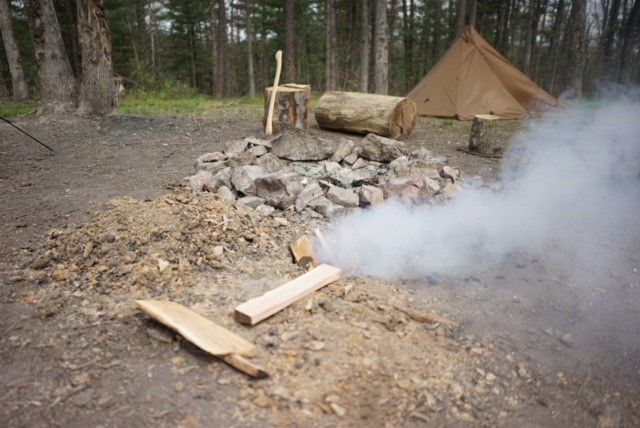There is nothing like coming back to deer camp after dark in the evening, tired and haggard from a long day of hunting, and not having to worry about cooking a hot meal. The dutch oven is a primitive version of crock pot cooking with the benefits that everything is sealed and safe. It is a delicious food time capsule delivering a piping hot cooked meal on demand.
I stumbled across this method of camp cooking when I was reading some of John Schulz's stories about the legendary Howard Hill. Apparently, some fans heard Howard was camped in a certain area and made themselves at home in his camp waiting for his return. They decided to help him out by building a roaring fire. The problem was that Howard had a nice venison roast buried under the campfire in his dutch oven. When he saw the fire as he approached camp, he ran out like a wild-man to the shock of his "guests" cursing and kicking burning logs all over the place trying to rescue his supper. He was too late and it was a charcoal softball. He was not too happy with those particular "fans" after he had to eat cold peanut butter sandwiches for supper.
Burying the dutch has now become my traditional hunting camp supper because of the quality and convenience of the meal. After a quick breakfast I am out and hunting in the magical morning hours. I'll typically return about midday and start a campfire and begin preparations. I will have already had my camp non-cooking camp mates dig a hole that is at least 3 inches wider and several feet deeper than the dimensions of the dutch oven adjacent to my campfire.
Once there are some good coals going, shovel a bunch and fill the hole. Then continue to burn some more wood in the hole to really heat up the surrounding soil for a hour or so. build up a good pile of hot coals inside many inches deep.
While this is burning, prepare your recipe. I enjoy adding some butter and caramelizing sliced onions in the oven bottom. Then browning the meat or stew pieces. Adding in the whole potatoes, carrots, celery, garlic and a few cups of stock or broth. I will typically chop and prepare these supplies at home in Tupperware containers to make the work a little easier and cleaner in the camp. Sometimes I don't. I also like to use my own bone broth to the dutch as it enhances the flavor. You want enough liquid that things will not dry out like you would with a slow cooker.
When it is ready to cook, simply shovel out half of the coals from the hole and place your lidded dutch into it, filling the spaces on top and around with the removed coals. Then completely bury it with the soil from the hole.
Now you can douse your fire and resume hunting without worry. I'm usually out hunting by 2 or 2:30 and back after dark. All that is needed upon your return to camp is to dig up dinner!
Brush off the lid and enjoy!
If nobody lights a bonfire above your cooking hole your dinner should be ready-made, hot, and tender.



























